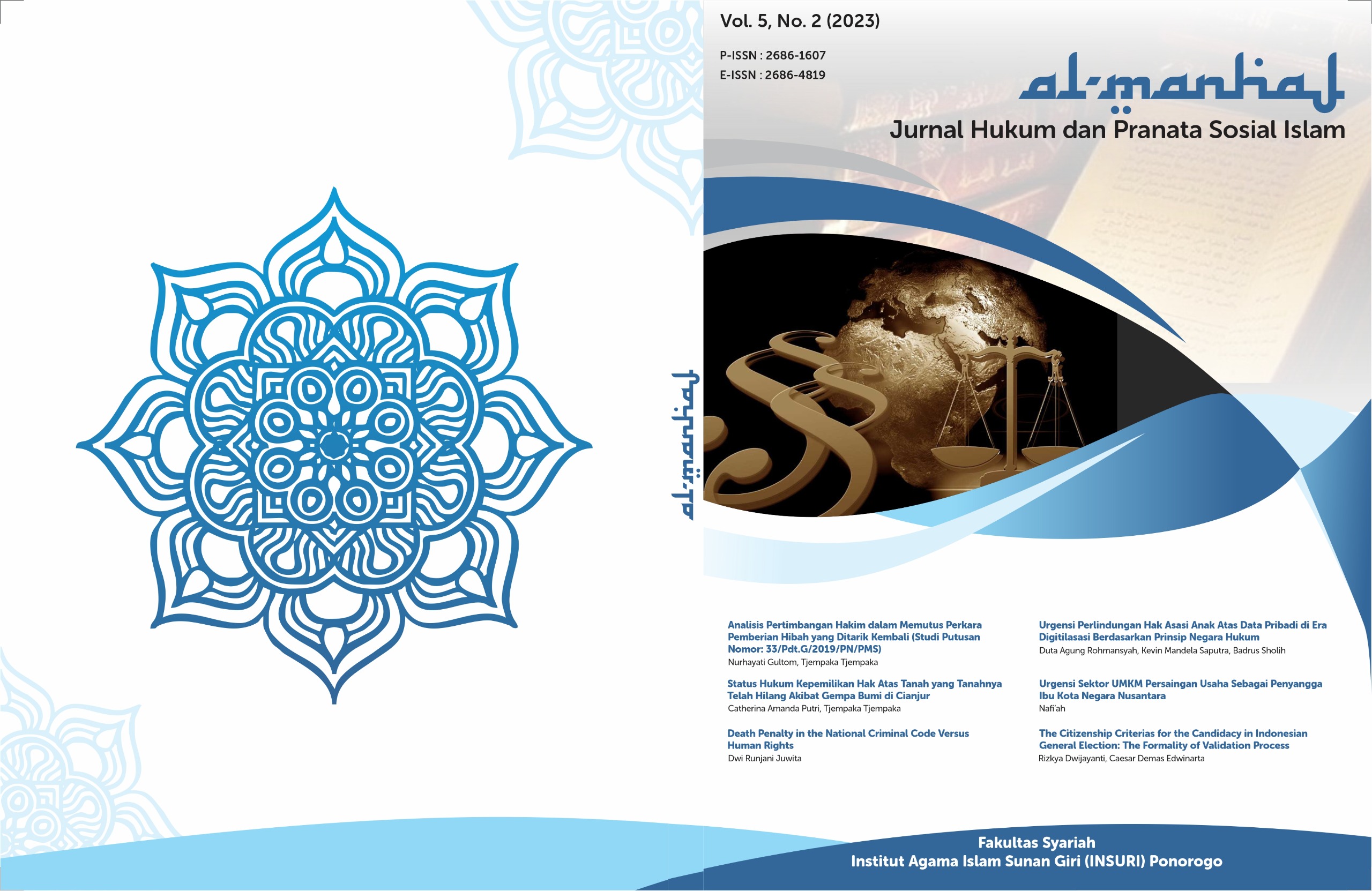Kajian Kriminologi Terhadap Tindak Pidana Pencurian Dengan Kekerasan Yang Dilakukan Oleh Anak
DOI:
https://doi.org/10.37680/almanhaj.v5i2.3588Keywords:
Crimonology, Crime, Theft, Violence, ChildrenAbstract
This study aims to identify and analyze the factors that cause violent crimes committed by children in Makassar City. This research method uses empirical legal research methods with primary and secondary data. The results of this study indicate, first, that the factors that cause the crime of theft with violence committed by children in Makassar City are caused by three main factors, namely social and environmental factors, instant mindset factors, and family dysfunction. In addition to these main factors, there are supporting factors that influence the occurrence of theft with violence by children in Makassar City, namely the victim factor, especially women who are mostly the targets of the perpetrators. Second, the efforts made by the National Police to prevent the occurrence of criminal acts of theft with violence committed by children in Makassar City have three main efforts, namely pre-emptive efforts, preventive efforts and repressive efforts in preventing the crime of theft by violence. by children. Recommendations or suggestions for this research are in making efforts to prevent theft with violence committed by children in Makassar City, it requires the cooperation of all parties to encourage the creation of peace and suppress the level of violent theft committed by children in Makassar City. . Then the role of law enforcement in providing treatment by imposing criminal sanctions indirectly, or imposing punishment in the form of punishment for children who commit theft with violence must be further enhanced, the punishment given must provide a deterrent effect and raise awareness of the perpetrator to improve his life, so that the perpetrators are punished. later have no intention to repeat or commit the crime.
Downloads
References
Al-quran dan Terjemahan Departemen Agama Republik Indonesia
Badan Pusat Statistik, http://www.bps.go.id (diakses pada 21 Maret 2021, pukul 10:00)
Djamali, R. Abdoel. (2010). Pengantar Hukum Indonesia Edisi Revisi. Jakarta: Rajawali Pers.
Hartanti, H., Suprihandoko, R., & Syafi‘i, I. (2021). Kajian Kriminologis Terhadap Tindak Pidana Pencurian Yang Dilakukan Anak (Studi Kasus Di Kabupaten Klaten). Prosiding Diseminasi Hasil Penelitian.
Indah Sri Utari. (2012). Aliran Dan Teori Dalam Kriminolog. Yogyakarta: Thafa Media.
R. Wiyono. (2015). Sistem Peradilan Anak Di Indonesia. Jakarta: Sinar Grafika.
Roslinda. “Kasus Pencurian di Toddopuli”. www.harianfajar.co.id (diakses pada 21 Maret 2021, pukul 13:55).
Soerjono Soekanto. (1987) Upaya Penanggulangan Tindak Kriminal. Jakarta:
Tambunan, D. A. S., Rozah, U., & Astuti, A. E. S. (2019). KAJIAN YURIDIS PEMIDANAAN TERHADAP ANAK PELAKU TINDAK PIDANA PENCURIAN DENGAN KEKERASAN (STUDI PUTUSAN NOMOR 19/PID. SUS-ANAK/2018/PN SMG). Diponegoro Law Journal, 8(3), 1919-1939.
Wawancara dengan Narasumber, Tanggal 2 Juni 2021
Wicaksono, G. A. (2023). Tinjauan Kriminologi Kejahatan Pencurian Yang Dilakukan Oleh Anak (Studi Kasus di Kepolisian Sektor Karang Tengah Kabupaten Wonogiri). JURNAL BEVINDING, 1(01), 181-192.
Downloads
Published
How to Cite
Issue
Section
License
Copyright:
- Author retains the copyright and grants the journal the right of first publication of the work simultaneously licensed under a Creative Commons Attribution 4.0 International License that allows others to share the work with an acknowledgment of the work's authorship and initial publication in this journal.
- Author is able to enter into separate, additional contractual arrangements for the non-exclusive distribution of the journal's published version of the work (e.g., post it to an institutional repository or publish it in a book) with the acknowledgment of its initial publication in this journal.
- Author is permitted and encouraged to post his/her work online (e.g., in institutional repositories or on their website) prior to and during the submission process, as it can lead to productive exchanges, as well as earlier and greater citation of the published work (See The Effect of Open Access).
License:
-
Attribution — You must give appropriate credit, provide a link to the license, and indicate if changes were made. You may do so in any reasonable manner, but not in any way that suggests the licensor endorses you or your use.
-
No additional restrictions — You may not apply legal terms or technological measures that legally restrict others from doing anything the license permits.
You are free to:
- Share — copy and redistribute the material in any medium or format
- Adapt — remix, transform, and build upon the material for any purpose, even commercially.

This work is licensed under a Creative Commons Attribution 4.0 International License.














